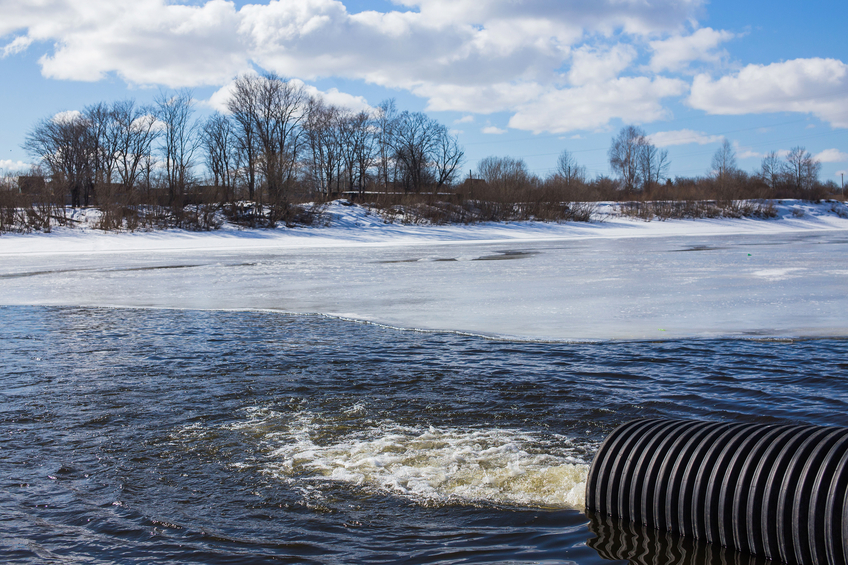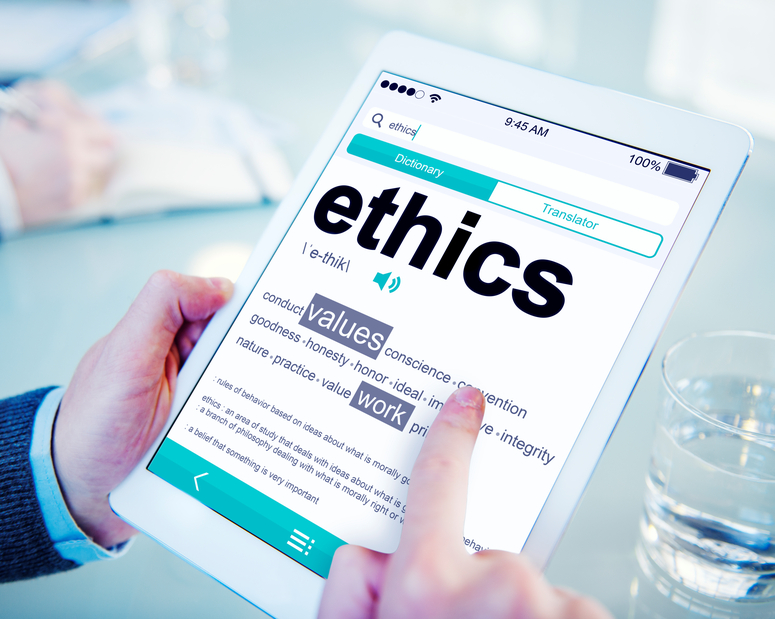Illinois Civil and Laws/Rules/Ethics/Sexual Harassment 30 PDH Discount Package 3
Courses in this Package
Building Terrorism Mitigation - Site Layout and Design (F05-002)
Concrete Airfield Pavements (C01-031)
Continuously Reinforced Concrete Pavement (C10-006)
Evaluation and Design of Concrete Repairs (C05-008)
Integrating Green Infrastructure into Local Hazard Mitigation Plans (C02-082)
Understanding Fluvial Systems (C04-068)
Sexual Harassment Prevention for Illinois Professionals (IL1-001)
Engineering Laws, Rules, and Ethics for Illinois Professional Engineers (IL2-001)

This online engineering PDH course discusses site-level considerations for development. The intent of this guidance is to provide concepts for integrating land use planning, landscape architecture (vegetation, landforms, and water), site planning, and other strategies to mitigate the design basis threats as identified via the risk assessment.
Integrating security requirements into a larger, more comprehensive approach necessitates achieving a balance among many objectives such as reducing risk; facilitating proper building function; aesthetics and matching architecture; hardening of physical structures beyond required building codes and standards; and maximizing use of non-structural systems.
This 5 PDH online course is applicable to engineers, planners, architects, landscape designers, construction and operations personnel, security and law enforcement agents, as well as consultants and contractors to gain a better understanding in identifying and implementing crucial asset protection measures when planning and designing the site against potential terrorist attacks.
This PE continuing education course is intended to provide you with the following specific knowledge and skills:
- Planning the use of land
- Selection the site
- Orienting the buildings on the site
- Integrating vehicle access, control points, physical barriers, landscaping and parking,
- Protecting utilities for threat mitigation
In this professional engineering CEU course, you need to review Chapter 2 "Site Layout and Design Guidance" of the FEMA Publication, "Mitigating Potential Terrorist Attacks Against Buildings" (FEMA 426).
Upon successful completion of the quiz, print your Certificate of Completion instantly. (Note: if you are paying by check or money order, you will be able to print it after we receive your payment.) For your convenience, we will also email it to you. Please note that you can log in to your account at any time to access and print your Certificate of Completion.

This online engineering PDH course provides an overview of the common problems and typical repairs and includes a visual system for evaluating and rating PCC pavements.
To manage aviation airfield pavements effectively, all pavements’ conditions should be periodically checked and then organized in an inventory in order to use these evaluations to set priorities for the project or find alternative treatments.
A comprehensive pavement management system involves collecting data and assessing several pavement characteristics: roughness, surface distress (condition), surface skid characteristics, drainage, and structure (pavement strength and deflection). Based on this data and combined with the economic analysis of the project, planners can develop treatment measures for the pavements.
This 1 PDH online course is applicable to civil engineers, airport owners and managers and professionals who are interested in learning more about concrete airfield pavements.
This PE continuing education course is intended to provide you with the following specific knowledge and skills:
- Familiarizing with the rigid performance of the airfield pavement
- Identifying the different surface pavement defects such as polishing, map cracking, pop-outs, etc.
- Learning about the longitudinal and transverse joints
- Knowing the different pavement cracks such as slab cracks, D-cracking, corner cracks, etc.
- Recognizing the type of pavement distortions and their causes
- Understanding the rating system used for evaluating the pavement surface condition
- Knowing the treatment measures for the pavement defects
- Providing practical advice on rating airfield pavement conditions
Upon successful completion of the quiz, print your Certificate of Completion instantly. (Note: if you are paying by check or money order, you will be able to print it after we receive your payment.) For your convenience, we will also email it to you. Please note that you can log in to your account at any time to access and print your Certificate of Completion.

This online engineering PDH course discusses the most common guidelines on the design, construction, maintenance, and rehabilitation of continuously reinforced concrete pavement (CRCP).
Continuously reinforced concrete pavement (CRCP) was introduced in the United States almost 100 years ago when the U.S. Bureau of Public Roads (now the Federal Highway Administration) constructed a CRCP test section on Columbia Pike in Arlington, Virginia. Since then, CRCP has been constructed in many states in the U.S. and in a number of other countries. As experience with the design and construction of CRCP has grown, a variety of lessons learned through practical experience and research have contributed to the development of best practices for CRCP throughout its life cycle.
Today, CRCP is designed and constructed as a pavement of choice for long-life performance, recognizing that initial smoothness will be maintained for decades and that maintenance during that time will be minimal.
This 10 PDH online course is applicable to civil engineers who are interested in learning about the design, construction and maintenance of CRCP as an ideal, long-life pavement solution for highly-trafficked and heavily-loaded roadways.
This PE continuing education course is intended to provide you with the following specific knowledge and skills:
- Familiarizing with the structure and design fundamentals of CRCP
- Learning about longitudinal and transverse reinforcement and the characteristics of reinforcing steel
- Learning about the different elements associated with CRCP construction
- Familiarizing with the performance of CRCP in the U.S. and other countries
- Gaining an overview of CRCP rehabilitation strategies, restoration and resurfacing
- Exploring the use of CRCP as an overlay
Upon successful completion of the quiz, print your Certificate of Completion instantly. (Note: if you are paying by check or money order, you will be able to print it after we receive your payment.) For your convenience, we will also email it to you. Please note that you can log in to your account at any time to access and print your Certificate of Completion.

This online engineering PDH course provides guidance on evaluating the condition of the concrete in a structure, relating the condition of the concrete to the underlying causes of that condition, and selecting an appropriate repair material and method for any deficiency found. A basic understanding of underlying causes of concrete deficiencies is essential to perform meaningful evaluations of concrete structures.
This 5 PDH online course is applicable to civil, geotechnical and structural engineers, as well as design and construction personnel working on construction projects involving evaluation and repair of concrete structures.
This PE continuing education course is intended to provide you with the following specific knowledge and skills:
- Evaluation of concrete in concrete structures
- Understanding the underlying causes of distress and deterioration in concrete
- Planning and design of concrete repairs
In this professional engineering CEU course, you need to review Chapters 2, 3 and 4 of the US Corps of Engineers Publication EM 1110-2-2002, "Evaluation and Repair of Concrete Structures".
Upon successful completion of the quiz, print your Certificate of Completion instantly. (Note: if you are paying by check or money order, you will be able to print it after we receive your payment.) For your convenience, we will also email it to you. Please note that you can log in to your account at any time to access and print your Certificate of Completion.

This online engineering PDH course provides basic information on how communities can integrate green infrastructure into their Local Hazard Mitigation Plans.
Communities across the United States are facing a variety of challenges, from outdated infrastructure, to water quality protection, to the need to increase community resilience and mitigate the impacts of flooding and other hazards. These communities are looking for multi-purpose solutions to these challenges.
Green infrastructure is one approach to improve water quality and address flooding challenges. Green infrastructure yields many benefits, including improved water quality, reduced flooding, infrastructure cost savings, and healthier communities. While green infrastructure alone may not fully address these issues, however, it adds capacity, flexibility, and resilience to other infrastructure systems and provides multiple community benefits.
This 2 PDH online course is applicable to civil, environmental and stormwater engineers who are interested in examining how communities can integrate green infrastructure into their Local Hazard Mitigation Plans.
This PE continuing education course is intended to provide you with the following specific knowledge and skills:
- Familiarizing with the concept of developing a Local Hazard Mitigation Plan
- Understanding the issues, requirements and evolution of stormwater management
- Learning how to integrate green infrastructure into the mitigation planning process
- Identifying important considerations for communities interested in pursuing this approach
- Exploring the green infrastructure integration efforts in the area under study
Upon successful completion of the quiz, print your Certificate of Completion instantly. (Note: if you are paying by check or money order, you will be able to print it after we receive your payment.) For your convenience, we will also email it to you. Please note that you can log in to your account at any time to access and print your Certificate of Completion.

This online engineering PDH course provides engineers with insights into the complex interactions between water, sediment, and vegetation, enabling them to design and implement effective solutions for managing and preserving fluvial systems and their associated habitats.
Fluvial systems encompass wetlands, stream and floodplains and play essential roles in ecological balance and hydrological processes. They receive surface and/or groundwater that travel downstream, collecting and transporting sediments along the landscape. Understanding the erosion, sedimentation and flood dynamics is important in designing effective strategies for flood control, habitat restoration, and sustainable land management.
This 4 PDH online course is applicable to practicing civil and environmental engineers, as well as other professional disciplines involved in the design, construction and maintenance of fluvial systems.
This PE continuing education course is intended to provide you with the following specific knowledge and skills:
- Understanding the importance of wetlands, streams, and floodplains in maintaining water quality and mitigating flood events
- Learning the role of erosion and sedimentation in altering stream and wetland morphology
- Understanding the hydrological processes and interactions that shape fluvial systems
- Defining the stream component of the fluvial system
- Familiarizing with classification and assessment methodologies used in the restoration of fluvial system
Upon successful completion of the quiz, print your Certificate of Completion instantly. (Note: if you are paying by check or money order, you will be able to print it after we receive your payment.) For your convenience, we will also email it to you. Please note that you can log in to your account at any time to access and print your Certificate of Completion.

This online PDH course presents a training on sexual harassment prevention in order to adopt and actively implement policies that ensure that workplaces are safe for employees to report and express their concerns about sexual harassment.
The Illinois Human Rights Act makes it a civil rights violation “[f]or any employer, employee, agent of any employer, employment agency or labor organization to engage in sexual harassment.” 775 ILCS 5/2-102(D).
The Illinois General Assembly finds that tolerance of sexual harassment has a detrimental influence in workplaces by creating a hostile environment for employees, reducing productivity, and increasing legal liability. Therefore, every employer in the State of Illinois is required to provide employees with sexual harassment prevention training that complies with section 2-109 of the Illinois Human Rights Act (“IHRA”).
This 1 PDH online course is applicable to professionals licensed in the State of Illinois and who are required to demonstrate continuing professional competency in sexual harassment prevention training as a condition of their license renewal.
This PE continuing education course is intended to provide you with the following specific knowledge and skills:
- Gaining an overview of sexual harassment prevention consistent with the Illinois Human Rights Act
- Familiarizing with types of unlawful sexual harassment, unwelcome behavior and working environment
- Learning about examples of conduct that may constitute unlawful sexual harassment
- Understanding sexual harassment in online environments
- Understanding employer responsibilities in the prevention, investigation, and corrective measures on sexual harassment
- Familiarizing with the Federal and State statutory laws concerning sexual harassment including remedies available to victims
Upon successful completion of the quiz, print your Certificate of Completion instantly. (Note: if you are paying by check or money order, you will be able to print it after we receive your payment.) For your convenience, we will also email it to you. Please note that you can log in to your account at any time to access and print your Certificate of Completion.

This online engineering PDH course presents the laws and rules of ethics and professional responsibility governing the practice of engineering in the State of Illinois.
Engineering ethics is (1) the study of moral issues and decisions confronting individuals and organizations involved in engineering and (2) the study of related questions about moral conduct, character, ideals and relationships of peoples and organizations involved in technological development (Martin and Schinzinger, Ethics in Engineering).
Excerpts from the Professional Engineering Practice Act of 1989, 225 ILCS 325 and the Illinois Administrative Code, Part 1380, which relate to the rules of profession conduct, continuing education requirements, proper use of seal and other pertinent regulatory provisions are presented in this course.
This 2 PDH online course is applicable to Professional Engineers licensed in the State of Illinois who are required to demonstrate continuing professional competency in the Illinois Laws, Rules and Ethics as a condition of license renewal. For each renewal period, every licensee must complete thirty (30) professional development hours, at least one (1) of the 30 hours must be in professional ethics and one (1) of the 30 hours must be in the laws and rules regulating the practice of engineering in the State of Illinois.
This PE continuing education course is intended to provide you with the following specific knowledge and skills:
- Familiarizing with the laws and rules regulating the practice of engineering in the State of Illinois
- Learning about engineering ethics, the rules of professional conduct and responsibility
- Understanding the role of the Illinois Board and its disciplinary authority
- Understanding the continuing education requirements in the State of Illinois
- Gaining an overview of disciplinary cases, violations and their corresponding penalties imposed by the Illinois Board
Upon successful completion of the quiz, print your Certificate of Completion instantly. (Note: if you are paying by check or money order, you will be able to print it after we receive your payment.) For your convenience, we will also email it to you. Please note that you can log in to your account at any time to access and print your Certificate of Completion.